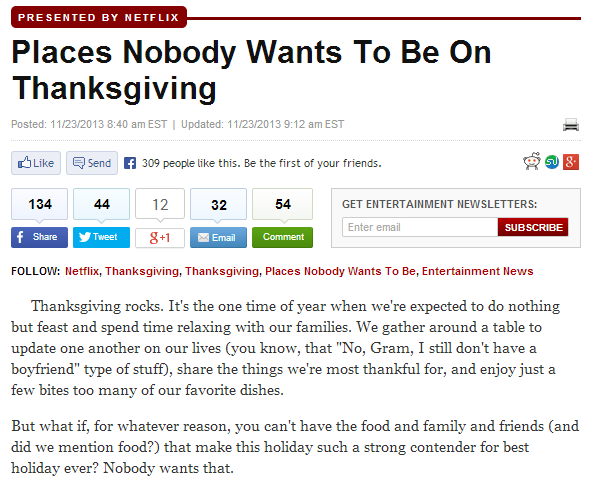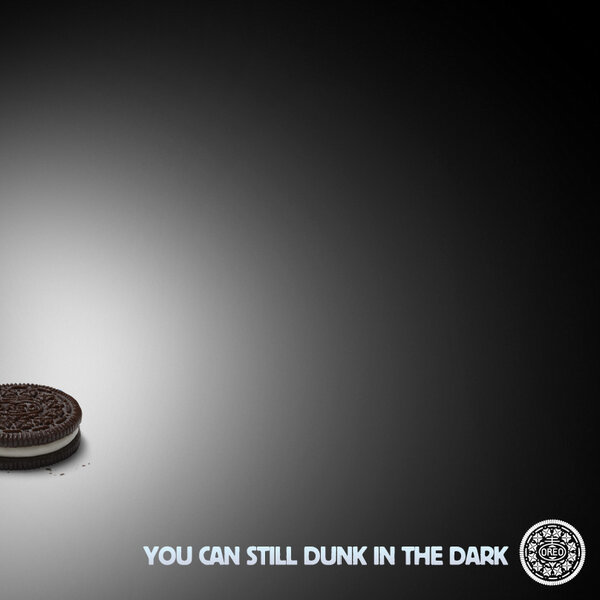Native Advertising is a form of paid media where ads are built into the actual visual design as part of the content. Many believe Native Ads have advantages because they are integrated into platforms consumers frequently use. You probably already know about them through names like Suggested Posts, Promoted Tweets and Sponsored Stories.
But it’s much more. The biggest platforms and publishers in the world have universally adopted Native Advertising. They include social networks like Facebook, Twitter, Tumblr and major advertisers like Time Inc, Forbes, WSJ, New York Times, and Hearst. In fact, Native Advertising is the fastest growing form of advertising.
- 83% of all online publishers offer some form of sponsored content (Source: Advertising Age)
- 71% increase in spending for Native Ads occurred in 2013 vs 2012 (Source: Online Publishers Associated)
- 53% greater viewership occurs for Native Ads than traditional display ads (AdAge)
- 42% of social media spending is expected to be in Native Ads by 2017 (source: BIAKelsey)
- $1.6 billion in Native Advertising spending in 2012; it is expected to grow to $4.6 billion by 2017 (BIAKelsey)
The Interactive Advertising Bureau (IAB) has already taken the lead to define best practices in the IAB Native Advertising Playbook.
Are Native Ads the next big thing? Or do they blur the lines between ads and editorial content? Are they natural? Are they ethical? Are they good digital advertising?
To help you decide, here are 10 best examples of Native Ads to guide advertisers.
- AMERICAN EXPRESS: This example, paid for by American Express, is part of their Inflection Points series, which outlines the growth of small businesses. Here, American Express is promoting their new OPEN forum, a help-network for small businesses. Mashable’s Branded Content Sponsorships is their native advertising program, where sponsored content is among the regularly produced articles. Mashable’s philosophy is that the best paid content marketing strategy is typically long-term, so the branded content is usually produced as series.
- COLLOQUY: Q&A with Google’s Avinash Kaushik: Marketing without Shouting, is sponsored by Colloquy. It looks and reads like a question-and-answer discussion between a source and a journalist, but it’s an ad created by Colloquy. The publisher, Quartz, doesn’t have a homepage, and the advertising content sits in between pieces of editorial content. Still, this piece of advertorial does offer readers helpful advice on how marketers can work in “conversational marketing” into their project.
- GATORADE: Gatorade began promoting their new G Series, they turned to Pandora to play off the connection between working out and listening to music. For each drink in the series they created a unique Pandora playlist to warm up, workout and cool down. Over 485,000+ station adds, 519,000+ total listening hours and nearly 96% of adds and listens were done on a mobile device.’
- GE CAPTIAL: : Publisher, Slate, and GE Capital teamed up for a pretty aggressive sponsored-content play. Instead of a typical piece of content, they decided to hit the road – literally. Slate and GE Capital rolled out on a 20-city, six-month road show to raise awareness of the middle-market businesses. Each day, content is uploaded to a Slate-built site called Roadshow.Slate.com. For example, this infographic puts a spotlight on novel and interesting gadgets, like an alarm clock that makes you wake up to logic puzzle games. Nothing like thinking to start your day!
- NETFLIX: This native advertisement example is a sponsored piece by Netflix created by The Huffington Post during Thanksgiving week. Native advertisements at the Huffington Post are unique for the fact they possess their own partner studio which manages sponsored content creation with Huffington writers. Netflix pushes the prospect of having a boring or unfortunate weekend and having Netflix come to the rescue. There are 2 links, one before the premium content and one at the end, that lead to a sign-up page for NetflixThis creates an ad experience that is almost impossible to detect if not for the “Sponsored Feature” label, or in this case, the “Presented By Netflix” label.
- OREO: “Power out. No problem. You can still dunk in the dark.” The Oreo’s tweet was real-time relevance during last year’s Super Bowl when the lights went out. The Super Bowl spot cost $4 million to run, even without production. The Tweet in Oreo’s Twitter Feed was free. It was Re-Tweeted 15,000 times, gained 8,000 followers and 20,000 Facebook Likes. It was very clever creative content at the right time. It is heralded as a best use of the native experience and proves we’ve come a long way from “I’m going to Disney World!” messages.
- SAMSUNG: During Game 5 of the 2013 NBA playoffs, Samsung aired this 3 minute spot to promote their line of Galaxy smartphones. They purchased one million copies of Jay Z’s new Magna Carta album and offered them free to Galaxy users before they dropped. This content-driven campaign has since driven millions of YouTube views on the Samsung Mobile channel and traffic to their landing page that provided more behind the scenes.
http://youtu.be/B–ZARCwSIE
- STATE FARM: 10 Ways To Be An Amazing Neighbor. “Like a good neighbor, State Farm is there.” We all know the tagline and jingle. Buzzfeed worked with the insurance company to create a list of common sense things we can do to be better neighbors. For instance, let your neighbors know you’ll sign for their packages or organize a potluck dinner. This is a piece of advertising content that aligns with State Farm’s brand message.
- TARGET: 15 Reasons Why Cats Are the Most Fearless Creatures. This is another very clever use of Buzzfeed to draw attention to “Check out these fearless kitties and get the best toys and food for your special pet at Target.”
- UPS:Unlike The Huffington Post, Business Insider features sponsored content written exclusively by the advertiser. Like Forbes, Business Insider’s sponsored articles are informative and often have little to no correlation with the advertising brand, and so many times the native ads here are simply geared towards branding. In this example, UPS wrote an article on corporate responsibility, but this article features General Mills, Ikea, Bank of America, and Ford. Not once do they mention what UPS is doing on these grounds, and so their only call to action here is at the bottom:
Do these examples make it clear what Native Advertising is? Are they natural? Ethical? Good advertising?
Do you think we’ve come a long way from “I’m going to Disney World?” Do you need more guidance on Native Advertising?













Fascinating. With the pervasive suspicion or lack of credibility for traditional advertising, this “native advertising” may be a good tactic to overcome these doubts.
JayGronlund Thanks Jay. Appreciate your insights.
[…] the ad. Three Pandora radio stations were created for users’ warm up, workout and cool down. As a result, more than 485 000 stations were added by users and more than 519 000 hours of Gatorade-chosen […]
[…] del riscaldamento, a qella della performance vera e propria e alla fase del raffreddamento finale. Risultato? Più di 485.000 utenti hanno raggiunto le tre stazioni e hanno ascoltato più di 519.000 ore di […]
[…] with the ad. Three Pandora radio stations were created for users’ warm up, workout and cool down. As a result, more than 485 000 stations were added by users and more than 519 000 hours of Gatorade-chosen […]